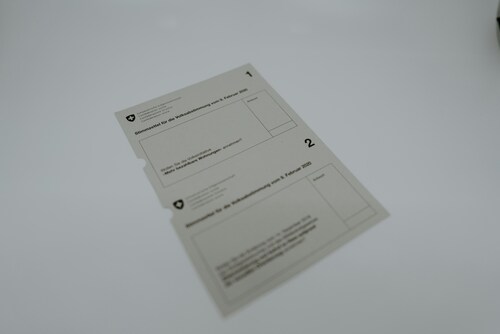The Evolution of Faxing: From Analog to Digital
Faxing has come a long way since its inception in the mid-19th century. Developed initially as a way to transmit scanned printed material over telegraph lines, early fax machines were bulky and slow. Over the decades, fax technology evolved significantly, becoming a standard tool for businesses in the 1980s and 1990s. These analog machines relied on phone lines to send documents, requiring the sender and receiver to have compatible hardware.
As the digital age took hold, faxing began to adapt. Email-to-fax services, cloud-based platforms, and multifunction printers transformed how documents are shared. One constant, however, has been using a fax cover sheet. This simple but essential page provides context, including the sender’s and recipient’s information, subject matter, and special instructions. This cover sheet ensures clarity and organization even in digital formats, bridging the gap between traditional practices and modern communication.
In the modern age, digital faxing offers enhanced security, accessibility, and efficiency. Thanks to encrypted transmissions, cloud storage, and mobile integration, users can send and receive faxes from virtually anywhere. As companies focus on remote work and safeguarding data, digital faxing remains a pertinent and dependable solution. The transition from analog to digital has maintained faxing’s usefulness while improving its function in modern communication.
Advantages of Digital Faxing
Digital faxing offers several key advantages in today’s fast-paced business environment. Unlike traditional fax machines, digital faxing allows users to send and receive documents via email, web platforms, or mobile apps. This eliminates the need for physical hardware and dedicated phone lines, reducing costs and improving accessibility for remote teams.
One of the best practices for digital faxing is to include a fax cover sheet. This provides essential context, such as recipient information, sender details, and the purpose of the fax. Using a cover sheet helps arrange documents and ensures that the message is delivered to the correct recipient, enhancing professionalism and reducing the likelihood of misunderstandings.
Security is another significant benefit of digital faxing. Many services offer encryption, secure storage, and compliance with data protection standards like HIPAA. These features make digital faxing a reliable and safe option for transmitting sensitive documents in the digital age.
Best Practices for Digital Faxing
Leveraging the full potential of digital faxing necessitates observing a set of best practices tailored to maximize security and efficiency. A fundamental rule in digital communication is verifying all recipient information before sending a document. Double-check the recipient’s details, whether an email address or a fax number, to guard against the accidental dissemination of sensitive information, which can lead to breaches of confidentiality and even legal challenges. Another critical practice is always using a secure internet connection when transmitting faxes; compromised networks allow cybercriminals to intercept sensitive data. Regular updates to faxing software are also necessary. Updating protects systems from new security vulnerabilities and can introduce enhanced features that improve user engagement and document management processes. Additionally, utilizing a fax cover sheet becomes indispensable, offering an additional layer of professionalism and confidentiality, ensuring that only the intended recipient is privy to the contents. These practices collectively provide a seamless, safe, and efficient faxing experience in the digital realm.
Overcoming Common Challenges
Despite its many advantages, digital faxing can present challenges, primarily from technical glitches or system compatibility issues. Many companies are adopting cloud-based fax solutions to navigate these. These cloud services offer unparalleled flexibility, allowing users to send and receive faxes from any internet-connected device. This flexibility is especially beneficial for companies needing mobility or working in a dynamic environment where rapid decision-making is essential. Moreover, these services typically come with robust customer support and user-friendly interfaces, reducing the learning curve and minimizing the likelihood of user errors contributing to downtime. Overcoming these common obstacles requires technological solutions and process adjustments that embrace new communications paradigms, integrating with other collaboration tools to streamline workflows further.
Ensuring Data Security
As the digital landscape grows, ensuring data security in online faxing is more critical than ever. Implementing strong encryption and utilizing secure faxing servers helps protect sensitive documents from unauthorized access. This highlights the need for comprehensive security protocols, including access controls that limit document handling to authorized personnel only.
Companies ought to perform periodic security assessments to detect weaknesses and assess the efficacy of their existing security protocols, enabling prompt enhancements. The principle of least privilege should guide system access, ensuring that individuals have only the permissions necessary for their roles. By making security a fundamental part of the faxing process, businesses can reap the benefits of digital transformation without compromising data confidentiality.
The Future of Faxing in Business
Looking ahead, the function of faxing in business communication is anticipated to become more advanced, benefiting from continuous technological progress. Faxing is expected to merge even more seamlessly with digital communication platforms, becoming part of an integrated ecosystem that includes email, chat, and cloud-based document sharing. Technologies like artificial intelligence and machine learning can potentially improve faxing by automating routine tasks such as classifying documents and detecting mistakes. AI could eventually enable predictive faxing, allowing systems to resolve issues based on usage trends and historical data proactively. This development would allow companies to uphold traditional communication methods while adopting digital workflows, guaranteeing continuity and effectiveness. As digital communication progresses, the techniques and technologies related to faxing will evolve, ensuring it remains an essential and efficient part of business infrastructure. This movement enhances efficiency and ensures businesses remain resilient and adaptable in a rapidly changing technological environment.




